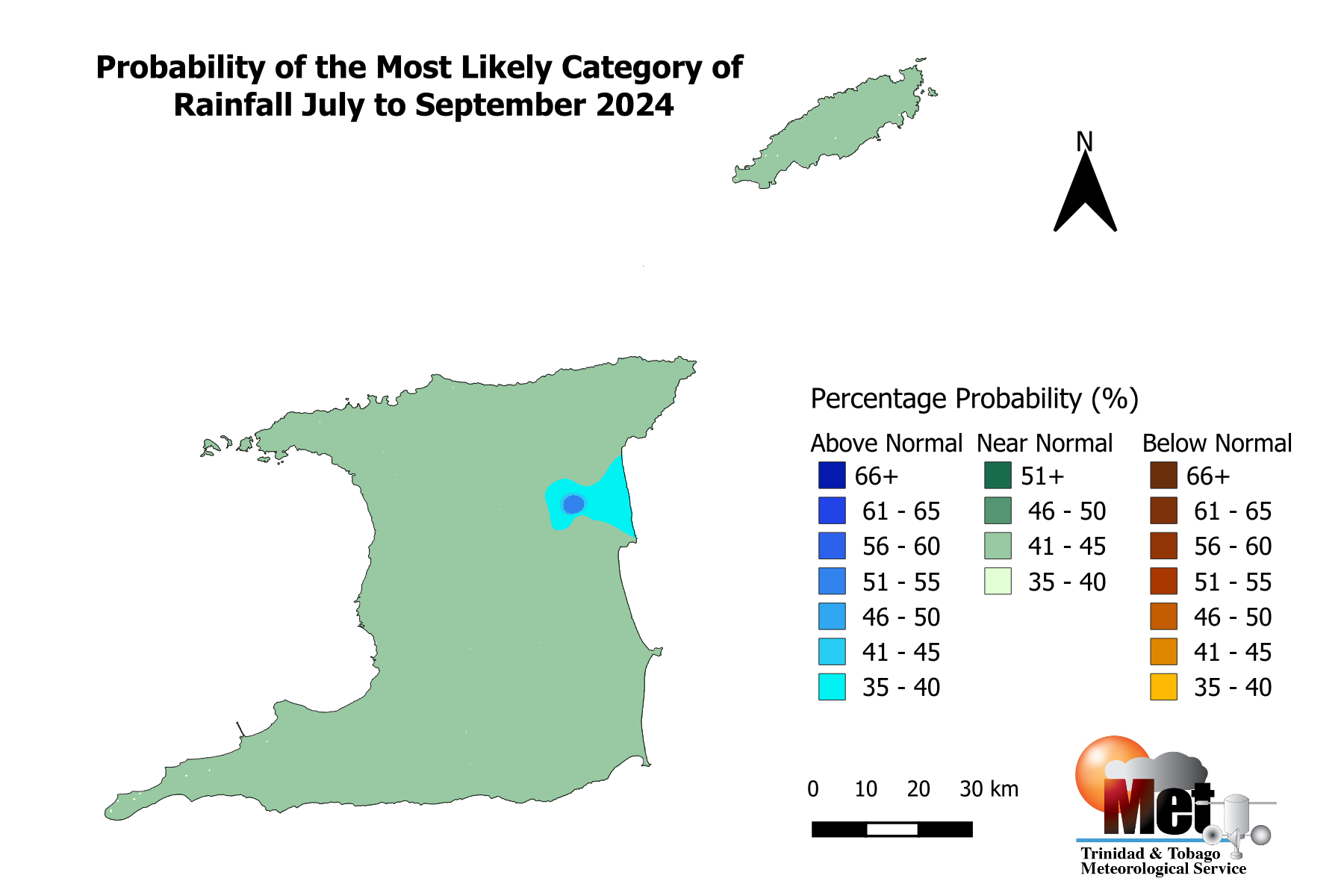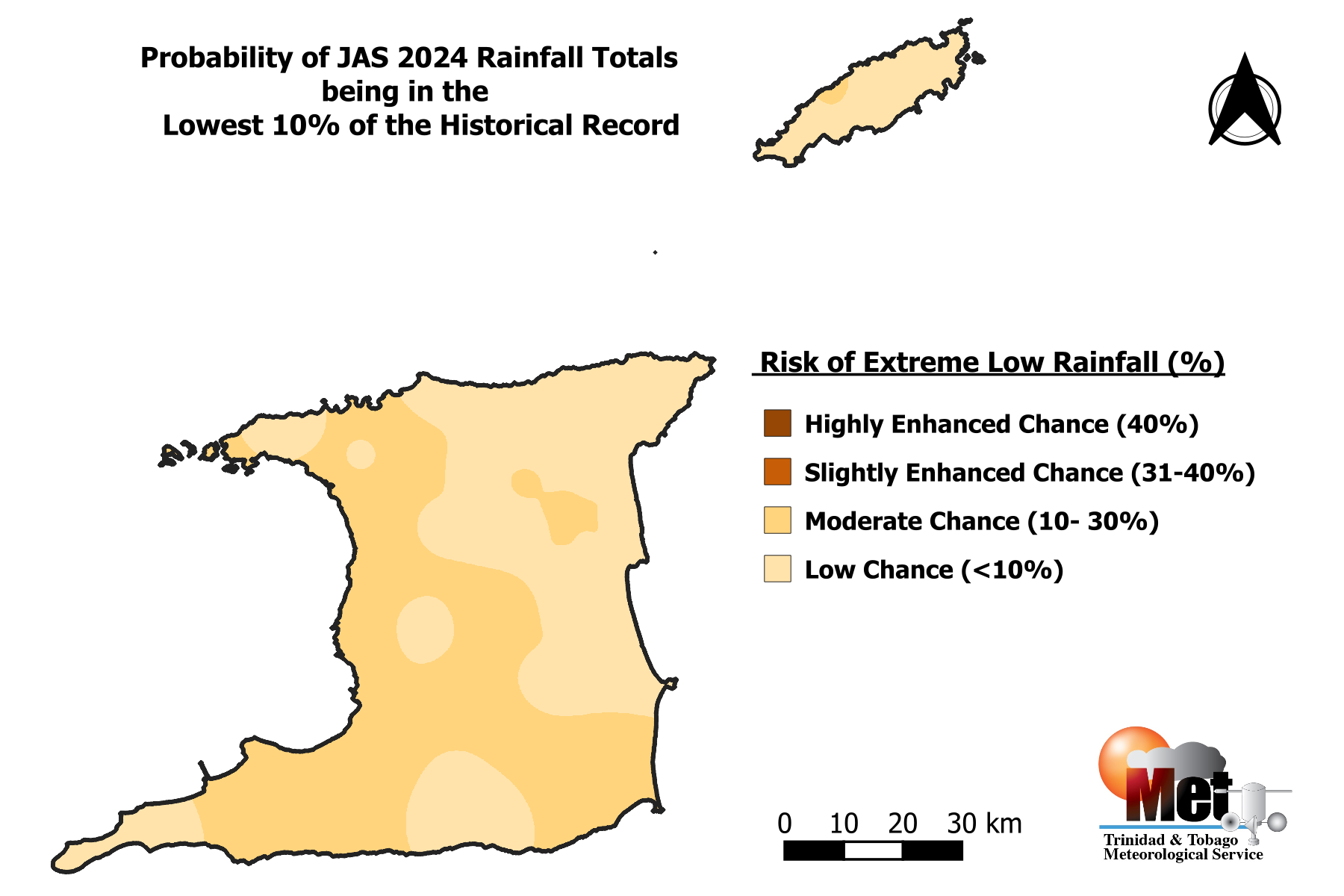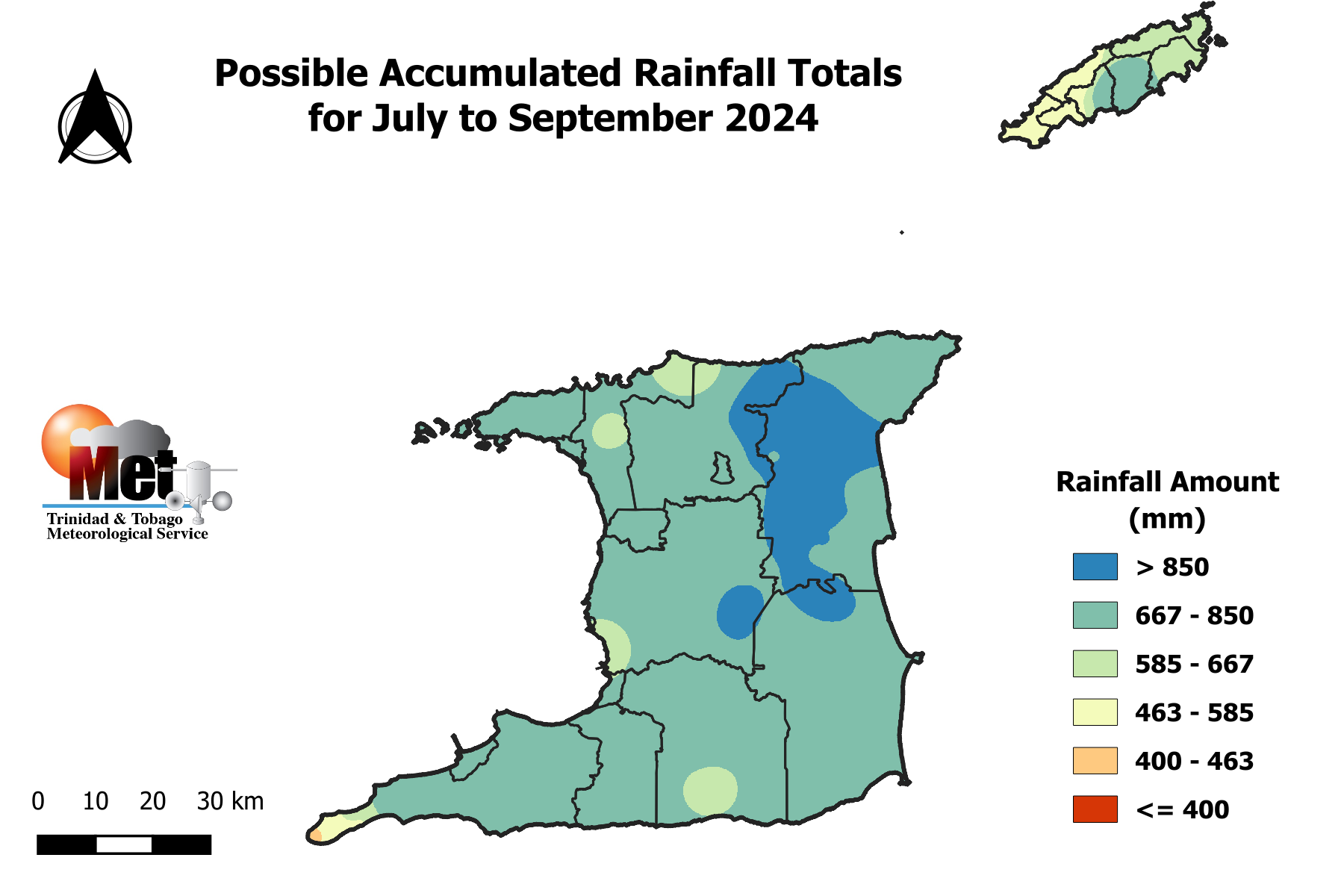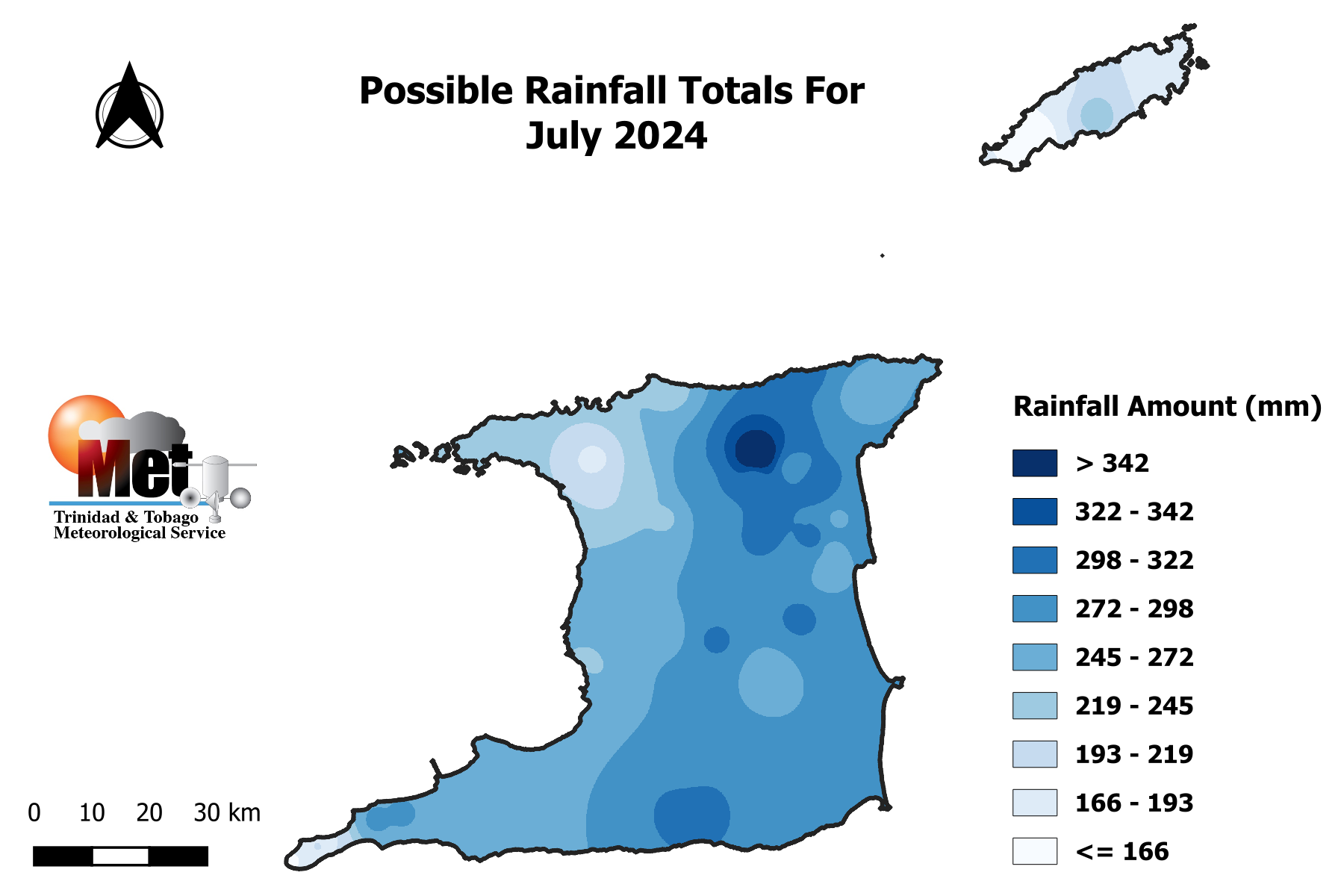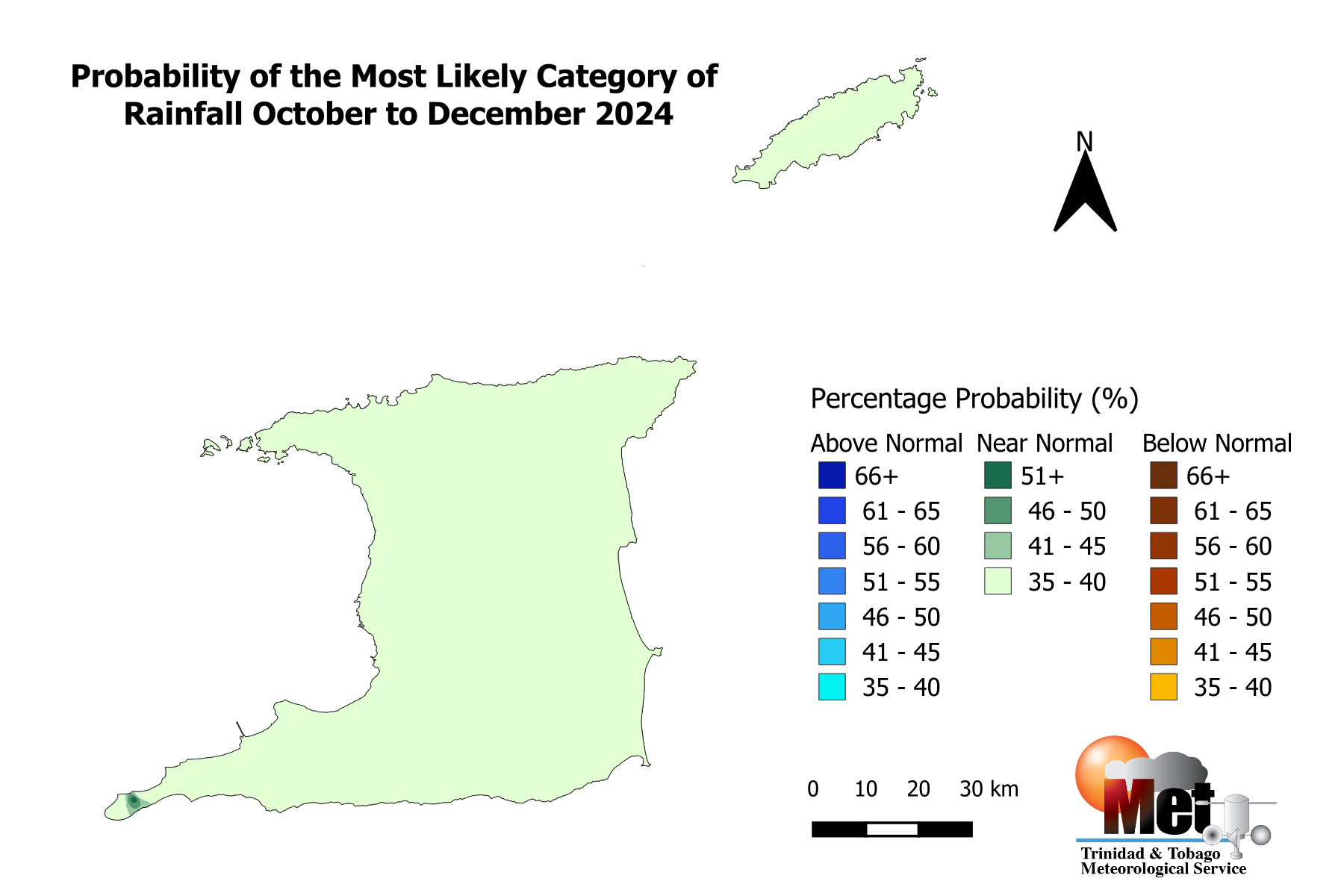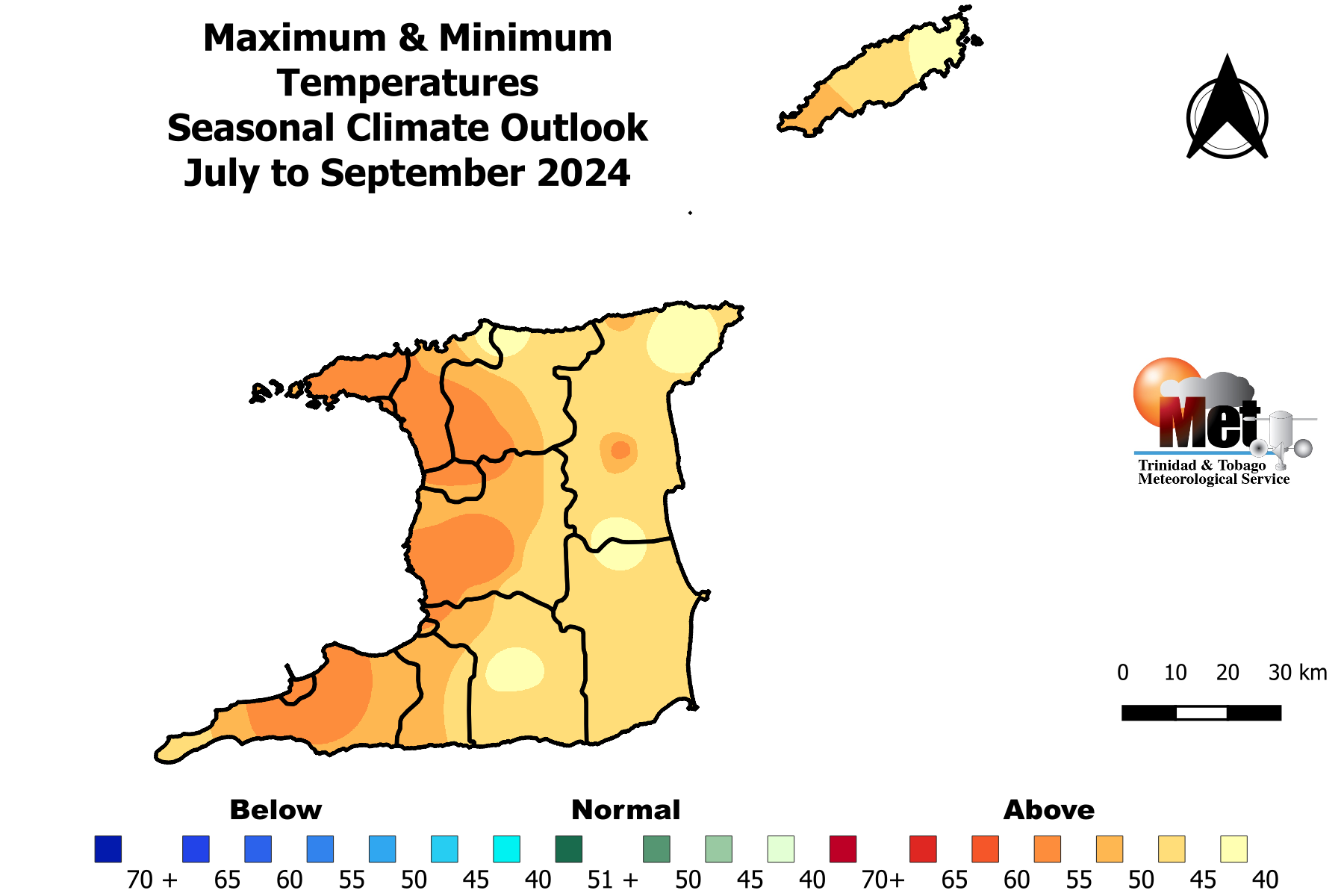Rainfall and Temperature Outlook for Trinidad and Tobago, July to September 2024
ISSUED AT: 12:05 PM
Date: Wednesday 3rd of July 2024
- Moderate chances exist for mostly near normal rainfall totals during July to September (JAS) over Trinidad and Tobago;
- Near normal means that a range of 75% to 125% of the average rainfall amounts are possible;
- Some small pockets may experience above normal rainfall over Trinidad and Tobago;
- Moderate chances (60%) for an average number of extremely wet days (> 25.0 mm) during JAS;
- Moderate chances (68%) exist for near normal rainfall in July;
- JAS period rainfall totals with the highest chance of occurring range between 437-1197 mm in Trinidad and between 468-750 mm in Tobago;
- Both day and night temperatures are predicted to be above average for most of Trinidad and Tobago with high (70%) probabilities.
- Mostly average rainfall totals are expected during July to September with moderate chances for usual number of wet days and a moderate chance for flooding to occur;
- An increase in surface water ponding in areas can promote mosquito breeding. This will increase the risk for higher incidences of vector borne diseases;
- Frequent rainfall events, mixed with warm and humid conditions tend to promote rapid multiplication of some agricultural pests, diseases and fungal growth.
- High probability exist for high fly and mosquito populations.
Rainfall and Temperature Outlook for Trinidad and Tobago, July to September 2024
ISSUED AT: 12:05 PM
Date: Wednesday 3rd of July 2024
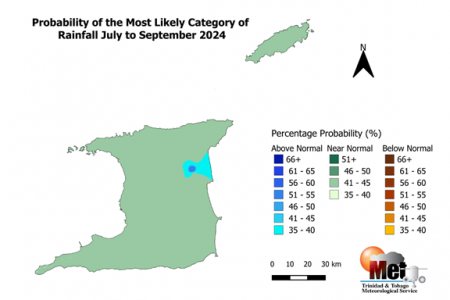
Figure 1: Category of rainfall likely for JAS (July to September) 2024 with the highest chance of occurrence expressed as probabilities represented on the map. Blue areas indicate places with an increased chance for above normal rainfall, brown areas show an increased chance for below normal rainfall, while green areas show an increased chance for near normal rainfall. Normal is defined by the rainfall that was observed in middle one-third of the JAS period rainfall totals during the historical period used to produce the outlook.
- Moderate probability exists for near normal rainfall totals over most parts of Trinidad and Tobago during JAS;
- Chances are moderate (60%) for the usual number of extremely wet days (> 25.0 mm) for JAS; i.e. expect between 2 – 7 extremely wet days in Trinidad and 2-5 in Tobago during the period.
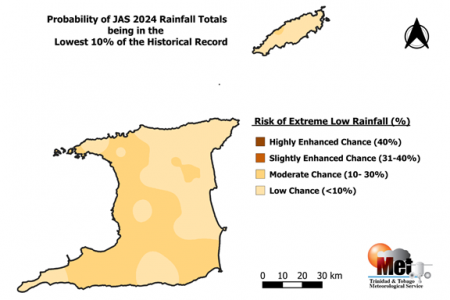
Figure 2: Risk of the JAS 2024 being extremely drier than normal (within the lowest 10% on record).
- The risk of extremely drier than normal conditions is low to moderate (6-22%) over Trinidad and Tobago;
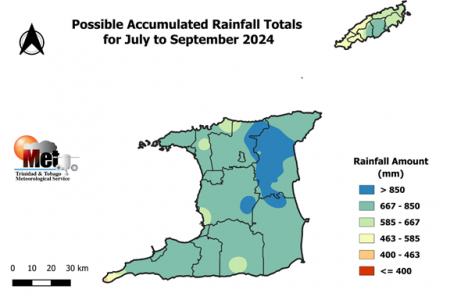
Figure 3: Outlook of possible rainfall accumulated totals for July to September, with the highest chance of occurring.
- Largest rainfall accumulated totals for JAS are likely to be as high as 1197 mm in areas such as Sangre Grande, North Oropouche and Nariva in Northeastern Trinidad; and near 750 mm in Goodwood, Mt. Saint George and environs in southeast Tobago.

Figure 4: Possible rainfall totals for July 2024.
- July rainfall with the highest chance of occurring ranges from about 159-375 mm in Trinidad and 139-229 mm in Tobago;
- There is a high probability for flooding events to occur in July.
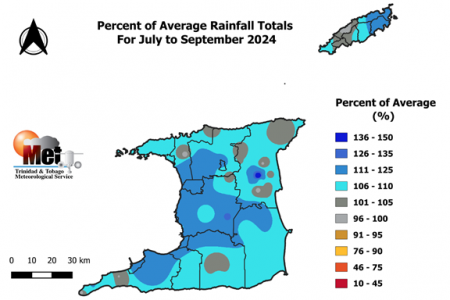
Figure 5: Percentage of Average Rainfall Totals for July to September 2024
- July to September (JAS) rainfall totals are likely to be mostly near normal over Trinidad and Tobago;
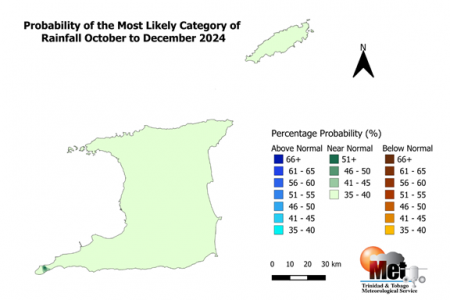
Figure 6: Category of rainfall likely for October to December with the highest chance of occurrence expressed as probabilities represented on the map. Blue areas indicate places with an increased chance for above normal rainfall, brown areas show an increased chance for below normal rainfall, while green areas show an increased chance for near normal rainfall. Normal is defined by the rainfall that was observed in middle one-third of the OND seasons during the historical period used to produce the outlook.
- Mostly near normal rainfall totals are expected during the period October to December across Trinidad and Tobago.
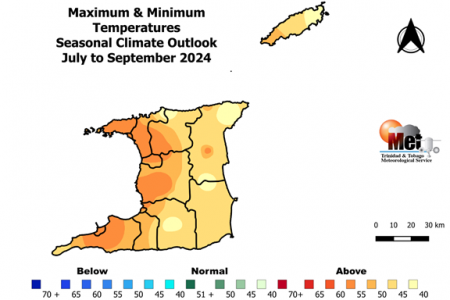
Figure 7: The map shows the colour-coded category (below-normal, above-normal, and near-normal) of maximum and maximum temperatures that is most likely to occur across Trinidad and Tobago for the July to September (JAS) period 2024. The colour-coded bar-graph with the numbers to the right gives the likelihood for each forecast category to occur.
The Temperature Outlook Favours Above Normal Temperatures for July to September 2024.
- Both daytime and night temperatures are likely to be warmer than average over both islands;
- There is a 70% chance of warmer than average days in urban and built up areas in Trinidad and Tobago;
- Chances of warmer than average nights are highest in Trinidad where there is 70% chance, while Tobago has a 68% chance;
How Should You Respond? Take Early Action!
Health Sector:
- Clear bushes, open drainage systems, fumigate in and around residences;
- Revisit contingency plans to manage spike in vector borne incidences and rainfall related infections.
Disaster Risk Management Sector:
- Sensitize communities on the forecast and its negative impacts;
- Revisit early warning information dissemination channels;
- Alert communities in low lying areas (flood prone) to act early;
- Alert at risk residence and communities that are still prone to landslide and slip.
Agriculture & Food Security Sector
- Practice soil moisture conservation like mulching and trenches;
- Clear vegetation from crop beds and drains to ease waterlogged soils.
- Put in place disease control measures.
Water, Drainage and Energy sector
- Implement water harvesting, storage and proper usage;
- Conduct routine de-silting of water channels, canals and reservoirs;
- Remove dry branches, trees and overhang near electrical wires.
General Public
- Proper preparation especially for persons in at risk areas;
- Clean drains and surrounding areas of debris, be sand-bag ready;
- Conserve, store and manage water in a safe and adequate manner;
- Be watchful for extreme rainfall events;
Be vigilant and visit the Met Service website regularly to keep up to date on local weather changes daily at www.metoffice.gov.tt or download our mobile app on Google Play Store or Apple iStore.
Climatic Influencers and Context of the Outlook
- Currently, sea surface temperatures (SSTs) in waters surrounding Trinidad and Tobago and further east of the islands are above average. Most climate models surveyed favour above average temperatures to persist throughout the period July to September 2024.
- ENSO neutral conditions exist presently. A change to La Niña in the coming months is likely to increase local cloudiness and local rainfall;
- The North Atlantic Oscillation (NAO) was observed in a moderately strong negative phase all throughout March to May and forecasted to continue negative but weak into July. The overall influence should be a positive impact on local rainfall.
- Models indicate that the Madden Julian Oscillation (MJO) signal is none existent over Trinidad and Tobago at this time and is not likely to reside over the region in the month of July.
